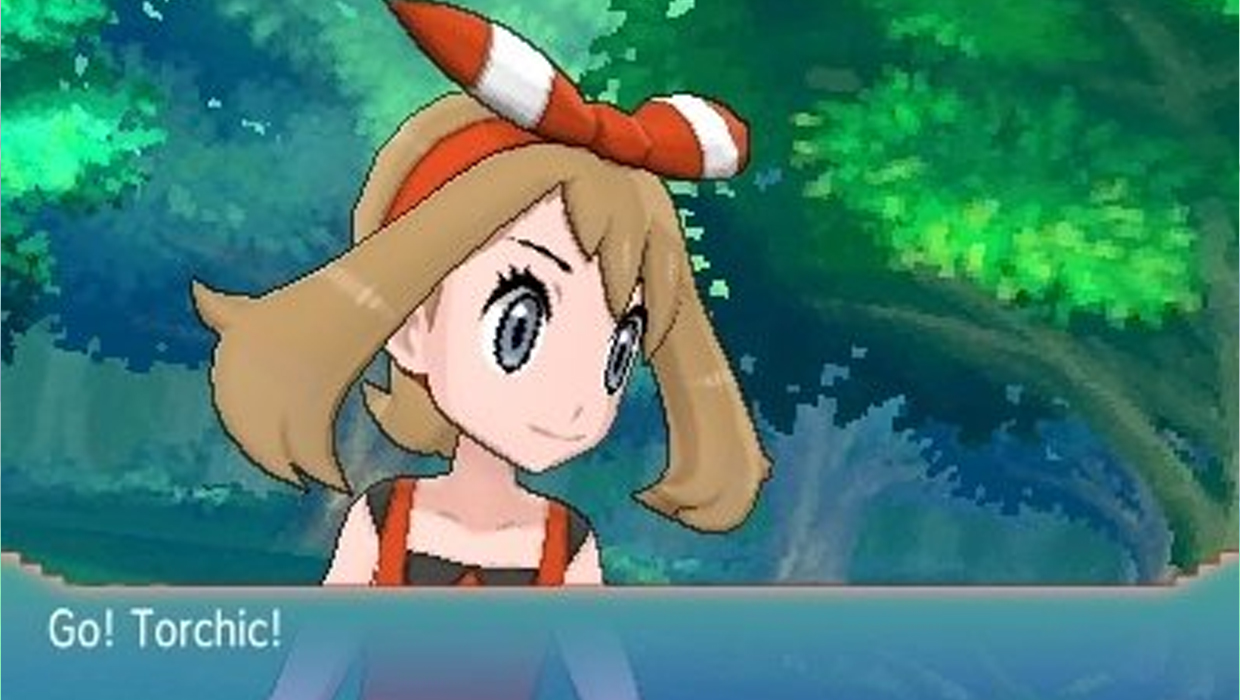Pokemon Omega Ruby and Alpha Sapphire creators tell us how they keep series fresh

Going back to the source
After making Pokemon X and Y the most technologically advanced entry in the series, the developers at Game Freak are looking back to 2002 to craft the follow-up. Like previous remakes FireRed/LeafGreen and HeartGold/SoulSilver, Omega Ruby and Alpha Sapphire updates a classic generation for new hardware, reintroducing the Hoenn region to players old and new.
After a novel opening that takes advantage of the 3DS's knack for stereoscopic visuals, I settled into the revised world of Hoenn. Even with little updates to the pacing and design, the world of Hoenn is warmly familiar to GBA fans, though additions like AreaNav mix things up. After an hour of gameplay to tide me over for the global launch of Omega and Alpha on November 21, I got to interview producer and series vet, Junichi Masuda, and the remakes' director, Shigeru Ohmori. Read on to see their thoughts on returning to the GBA games, the process for choosing Mega Evolutions, who they'd play as in Smash Bros., and much more...

When returning Ruby and Sapphire, was there anything you wanted to fix or adjust with the game?
Shigeru Ohmori: With the original Ruby/Sapphire, we felt that at the time and with the hardware available, we did everything we really wanted to do and were satisfied with what we created then. Of course, now we're working with new hardware, and while we wouldn't use the expression "fix," we have a lot more power available to us. From a visual factor, we're able to do more in terms of colors and show off the sky now that the games are rendered in full 3D.
The game's Hoenn region is based off the Japanese island of Kyushu, and even in the original games we wanted to convey this sense of a Japanese suburb. But now we're able to do a lot more with the deep greens that are faithful to that look. We can also make it look like it's really hot, using visual effects that really convey that heat. So those are some of the cool new additions from a visual perspective.

How do Alpha and Omega take advantage of the stereoscopic 3D?
SO: We implemented it in the same way we did for X and Y. One of the reasons we do this is we feel RPG players are going to play them for long hours at a time, so we don't want people's eyes to get tired from seeing the effect for that long. Also, since the 3DS doesn't require glasses, you can just leave the effect on so we can use it when it'll be the most impactful and we think players will enjoy it from that regard.

Since X and Y use the same engine, is there anything you wanted to adjust when returning to it with Alpha and Omega?
SO: X and Y were our first time working in full 3D, and we learned a lot working on them. We have new techniques in 3D animation, like facial expressions and camera angles, that we introduce in Alpha and Omega. The original event scenes are all in 2D, so I think we were able to do a lot of cool things when recreating them, keeping the old feeling but with a more dynamic appearance.
I think players will see a big difference in the Contest feature [a collection of cute talent shows as minigames]. It was 2D in the original games, so they're going to look completely different on the 3DS. Even compared to X and Y, there will be a lot cool, unique visuals and impactful, dynamic camera angles. And Mega Evolutions can be used in the contests now, which I think will look great. We've also gone back and added a story to [Contest mode] to make it even easier for players to engage with.

Is there a process for choosing which Pokemon gets a Mega Evolution?
Junichi Masuda: One of the factors we look at is the competitive battle environment, including competitions like the Pokemon World Championship and the online player battles. We gather a lot of data about what Pokemon are being used in a competitive environment, and how it'd be changed by a Mega Evolution. Our aim has been to have varied competition, so if we see a certain Pokemon getting used too much, we looked at adding Mega Evolutions to Alpha and Omega that could then counter those very popular Pokemon.
Of course, by doing that, it opens up new Pokemon to counter those Mega Evolutions. So, just adding new Mega Evolutions there really mixes up the battles, and changes the balance. Aside from that, we have the story that explores the mysterious origins of Mega Evolutions, which is centered around Mega Rayquaza. We introduce a lot of Mega Pokemon that are just necessitated from the story.

I've always been intrigued that Ruby/Sapphire is the only core Pokemon to show the protagonist's father on-screen. Is there any reason for that?
JM: (Laughs) There are a lot of protagonists in the Pokemon series, and I think all of them have fathers doing something somewhere in the world.
SO: (Laughs) It's been 12 years since the original version of these games, so maybe the original players will feel like a father themselves to the protagonist in the game.

Pokemon is known for great music, and previous remakes found interesting ways to translate the original music to new hardware. What's your approach with bringing GBA soundtracks to 3DS?
JM: As music creator for the series, I appreciate the kind words. In the GBA originals, we had much more limited capabilities with what we could do. There were just 10 different sound channels for the music and we had to deal with data size limits, so the music was just generated directly off the handheld's soundboard. On the 3DS, we can create pretty much any kind of music and just [stream] into the game directly, so we're able to do a lot more.
The sound team tried to stay true to the originals, so you'll feel a lot of nostalgia if you played Ruby/Sapphire. But we took care on the 3DS to make [the songs] attractive to new players too, so they could be eased into the game.

This is the second worldwide launch for a core Pokemon game. Have these massive releases been easier or harder than you expected?
JM: Finally accomplishing our goal of simultaneous global release really began seven years before the launch of X and Y. It took us that long to create the internal structure for it. In terms of staff, we had 120 working on development, but if you include all the people in localization, QA, coordination, and more, we probably had about 500 people involved in the project. That's a very large-scale project that takes a lot of coordination.
And when we put the Pokemon games in other languages, we don't want to do a straight translation of the Japanese. We demand a lot of creativity from the localization staff as well. Overall, it took a lot of effort, and continues to be a big challenge to this day, but I think everyone feels very satisfied and honored by the fan reaction when we get the games out around the world at the same time.

Do you see a future where Generations IV, V, and VI get remade?
JM: You mention Diamond and Pearl, and last year I remember the eight year anniversary. I hadn't really been thinking about it, but I got all these congratulatory messages on Twitter, and it was hard to believe it had really been that long since they came out. But it comes back to my earlier thoughts about not just creating a plain remake.
For example, with FireRed and LeafGreen (and the same with Alpha/Omega), we added new elements and also wanted to help players complete the National Pokedex on a single handheld. As long as we can find a cool gameplay or design reason to revisit games and update them for whatever the modern era is, we'd consider doing them.

Following X and Y, the Pokedex has over 700 entries. Do you worry about a day when there will be too many Pokemon?
JM: I think one of the most appealing things about Pokemon is that it attracts players from across generations. So there's this continuity, and we don't treat Pokemon from previous games as "old." They're just as relevant as any character that appears in the newer games. So I don't really think about specific numbers, but instead treating all Pokemon with the same level of relevance.
Whether you started with Red and Blue or X and Y, those players all know who Charizard is. They can have the same conversations when battling, with these shared experiences. Right now, that's what's really appealing to me as a creator, and I hope we continue on that way.

One last thing: If you could only play as one Pokemon in Smash Bros., which would it be?
JM: Just Pokemon, right? (Laughs) I really like speedy and agile characters, so I would go with Greninja.
SO: I'm a big fan of Jigglypuff. I would use that tiny character to knock other players off the arena.

Henry Gilbert is a former GamesRadar+ Editor, having spent seven years at the site helping to navigate our readers through the PS3 and Xbox 360 generation. Henry is now following another passion of his besides video games, working as the producer and podcast cohost of the popular Talking Simpsons and What a Cartoon podcasts.


